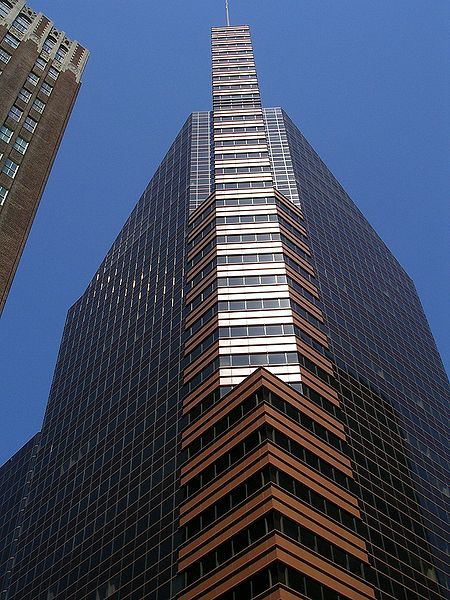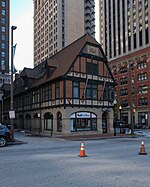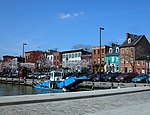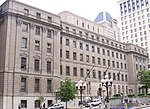William Donald Schaefer Building

The William Donald Schaefer Building (a.k.a. William Donald Schaefer Tower or simply Schaefer Tower, previously known as Merritt Tower) is the fourth-tallest building in the City of Baltimore, Maryland, located at 6 St. Paul Street. Originally completed by Merritt Savings and Loan in 1986 and later re-opened under state management in 1992, the building rises 37 floors and 493 feet (150 m) in height. Office space constitutes the lower 29 floors, housing more than 1,100 employees in 14 state agencies. The nine upper floors are unoccupied, containing a maintenance area, cement staircase, a ladder to the rooftop deck and then an eight-floor spiral staircase leading to the top of the spire and the flagpole.The flagpole atop the building reaches to 590 feet (180 m), higher than any building in the state. The flags flown from the tower's poles are (by order of former Governor Martin O'Malley) a large and noticeable Star-Spangled Banner flag (a recreation of that flown over Fort McHenry during the War of 1812); and a smaller Maryland state flag. Both are usually clearly visible throughout the downtown area and most of the city.The iconic building was renamed for William Donald Schaefer (1921–2011), who served as the Mayor of Baltimore (1971–1987), Governor of Maryland (1987–1995), and state comptroller (1999–2007).
Excerpt from the Wikipedia article William Donald Schaefer Building (License: CC BY-SA 3.0, Authors, Images).William Donald Schaefer Building
East Saratoga Street, Baltimore Downtown
Geographical coordinates (GPS) Address Nearby Places Show on map
Geographical coordinates (GPS)
| Latitude | Longitude |
|---|---|
| N 39.2898 ° | E -76.6141 ° |
Address
Business and Government Historic District
East Saratoga Street
21202 Baltimore, Downtown
Maryland, United States
Open on Google Maps







